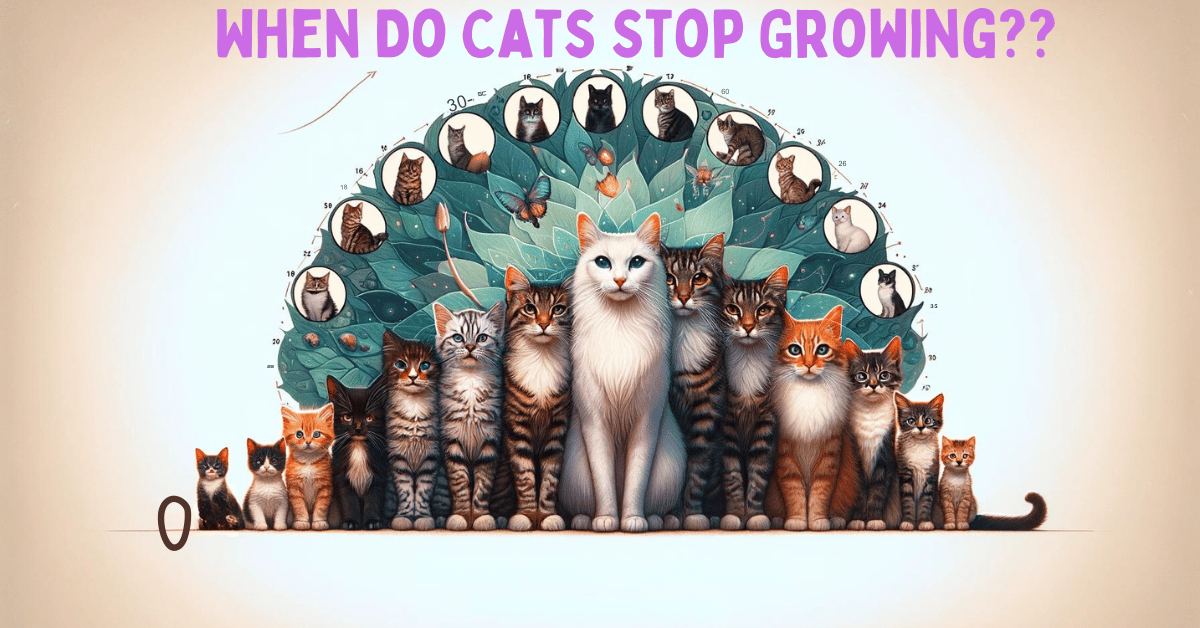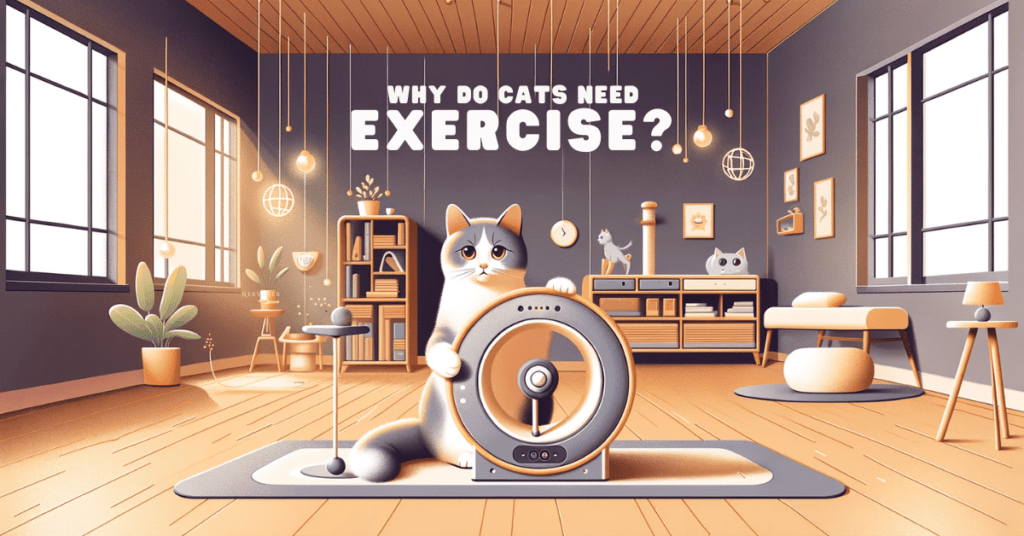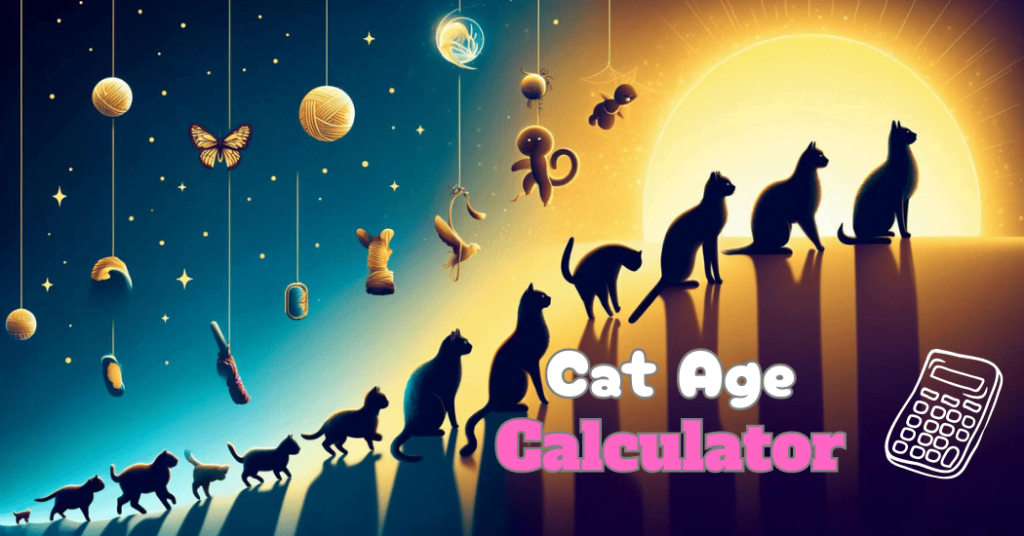This post contains affiliate links and I will be compensated if you make a purchase after clicking on my links.
Kitten Growth Explained: The Start of Their Journey
Watching a kitten grow mirrors the experience of turning the pages of a book brimming with surprises, where each chapter unveils new quirks, habits, and a touch of mischief. As these tiny creatures evolve into the majestic rulers of our homes, their journey from cuddly kittens to full-grown felines is a natural marvel, deeply influenced by genetics and the care we lavish upon them.
Delving into the topic of when do cats stop growing reveals the intricate diversity of the feline world, showcasing how each breed charts its own unique growth journey.
General Cat Growth Timeline
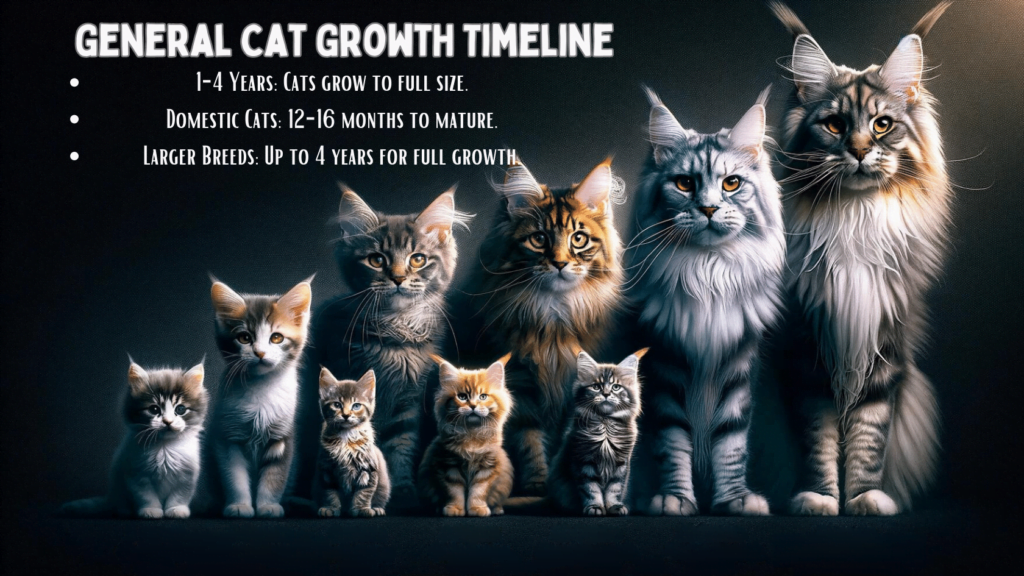
Cats, in their quiet, mysterious ways, take us on a growth journey that can span from 1 to 4 years until they reach their full majestic form. While your everyday domestic cat might wrap up this journey within 12 to 16 months, larger breeds like the noble Maine Coon take a more leisurely path, reaching full size only by the age of four.
When do Cats Stop Growing?: The Cat Growth Algorithm
Understanding when cats stop growing isn’t a one-size-fits-all answer—it’s a fascinating blend of breed specifics, environmental factors, and a pinch of mystery.
Let’s navigate through the growth timelines and sizes of various breeds, and explore the pivotal factors that contribute to their development.
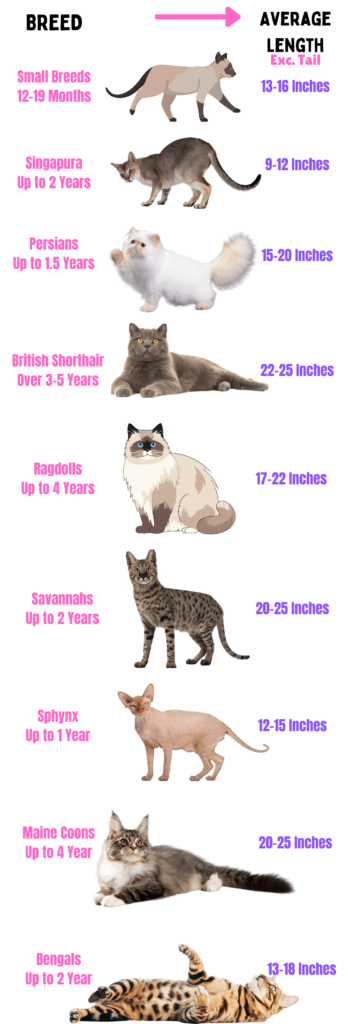
Breed-Specific Growth
1. Small Cat Breeds Growth
Cats like the sprightly Siamese or the charming Domestic Shorthair typically complete their growth journey around 12 to 19 months. These breeds often reach a cozy length of 13-16 inches, fitting perfectly into laps and snug corners.
2. Singapura Cats Growth
The pint-sized powerhouses of the cat kingdom, Singapuras, charm their way into hearts with their minuscule stature, taking up to two years to reach full physical maturity. When they do, they tip the scales at a delicate 6 pounds and boast dimensions of about 6-8 inches in height and 9-12 inches in length.
3. Persian Cats Growth
Persian cats, with their plush coats and gentle eyes, typically conclude their growth spurt by 2 years, settling into a regal stature that ranges from 15-20 inches in body length.
4. British Shorthair Cats Growth
The British Shorthair cat breed, with their teddy bear-like appearance, measures 22-25 inches in length and takes their time growing, stretching their development journey over three to five years. They initially bulk up in their first 10-12 months but continue to mature, especially the males.
5. Ragdoll Cats Growth
Ragdolls take their sweet time, often not reaching full size until about four years. They can stretch to lengths of 17-22 inches, making them the gentle giants of the cat world.
6. Savannah Cats Growth
Savannahs grow for about two years. They showcase a stunning range of 20-25 inches in length, embodying elegance and power.
7. Sphynx Cats Growth
Sphynx cats wrap up their physical growth around the 12-month mark, with their length reaching between 12 and 15 inches, nearly hitting their full potential a bit earlier, by 9 months.
8. Maine Coons Cats Growth
Maine Coons, famous for their impressive size and friendly nature, continue to grow until they are four years old. They can reach lengths of up to 25 inches (40 inches with their tail) and weigh about 25 lbs, truly making them the titans of domestic cats.
9. Bengal Cats Growth
The vibrant and active Bengals reach their full size around two years of age. Their growth mirrors their energetic personalities, with sizes averaging between 13-18 inches in length and weighing in at a robust 10-22 lbs.
Other Factors Influencing Cat Growth
The path to full growth is paved with more than just genetics; several key factors play crucial roles:
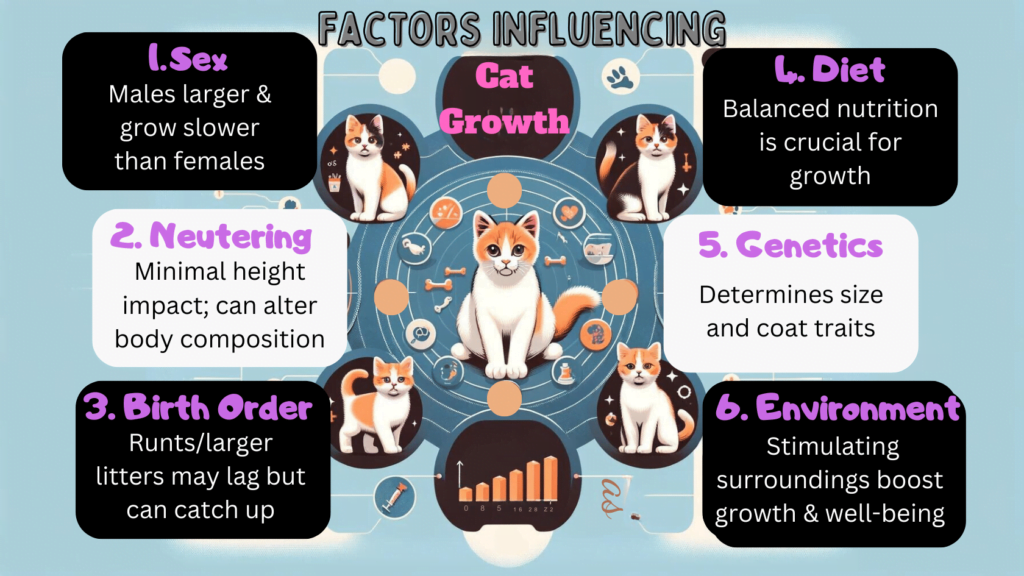
1. Sex of Cat
Male cats often enjoy a larger frame and take a bit longer to reach their full size compared to their female counterparts.
2. Spaying/Neutering
Neutering doesn’t significantly impact a cat’s growth in height or weight. It might slightly delay the closing of bone growth plates, potentially leading to a minor increase in height, but this effect is typically minimal. Neutering can influence a cat’s body composition, altering their physical build more than their actual size.
3. Birth Order and Litter Size
The runts of the litter or those from larger litters might face more challenges in their early growth stages, competing for nutrition and attention. Yet, with proper care, they often catch up to their siblings.
4. Diet
A cornerstone of healthy development, a balanced and nutritious diet ensures that a kitten has all the building blocks necessary for growth.
5. Genetics
Serving as the blueprint for growth, a cat’s genetic heritage predetermines a range of physical traits, from size to coat type.
6. Environmental and Lifestyle Influences
Access to a stimulating, safe space encourages physical activity and mental health, essential for holistic growth. Factors like the type of play, human interaction, and even outdoor access contribute to a cat’s physical and psychological well-being, shaping their growth in nuanced ways.
Beyond Kittendom: Navigating Through Life’s Stages
As your feline companion transitions through the stages of life from a curious kitten to a serene adult, understanding and adapting to the changes at each stage is crucial for their wellbeing.
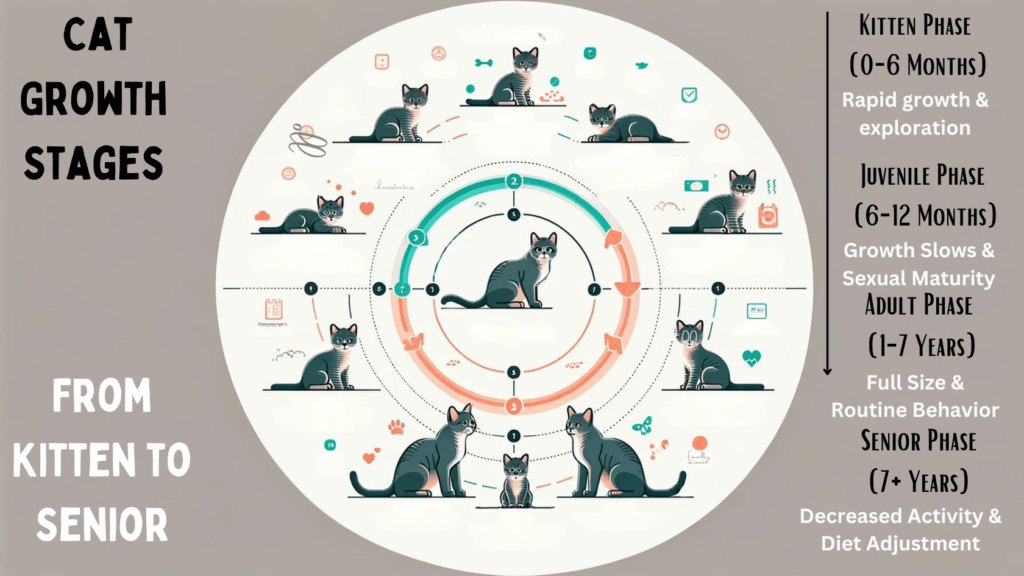
The Kitten Phase (0-6 Months)
- Rapid Growth and Exploration: Kittens experience swift physical growth, doubling or even tripling their size, alongside a curiosity that knows no bounds. This is a critical time for vaccinations and beginning litter training.
- Socialization and Play: Early interactions with humans and other pets shape their social skills. Play is not just fun but essential for their physical and mental development.
The Juvenile Phase (6-12 Months)
- Continued Growth: While the rate slows, kittens continue to grow and will start showing adult characteristics. It’s also when most reach sexual maturity, and spaying/neutering is recommended.
- Behavioral Development: Personalities become more pronounced. This period can include testing boundaries, so consistent training is key.
The Adult Phase (1-7 Years)
- Physical Maturity: By this stage, cats have reached their full size, but weight gain can occur if diet and exercise aren’t managed properly. Maintaining a balanced diet and regular play sessions is crucial.
- Stable Behavior: As they settle into adulthood, behavior stabilizes. They develop a routine and show preferences for food, toys, and interaction. Regular health checks become essential to catch any early signs of disease.
The Senior Phase (7+ Years)
- Slower Pace: Activity levels may decrease, and they might appreciate more comfort and quieter play. Adjustments in diet to suit their aging needs are necessary to manage weight and support joint health.
- Health Monitoring: Increased veterinary care is vital to manage age-related conditions. Regular dental care, blood tests, and weight monitoring can help ensure a quality life in their senior years.
Behavioral Changes and Emotional Well-being
Moving beyond the physical, adulthood brings nuanced changes in behavior and needs:
- Behavioral Shifts: The mischievous kitten may evolve into a dignified observer or retain a playful streak, depending on their personality and life experiences.
- Emotional Needs: Recognizing and adapting to these behavioral changes is essential. Creating a stable environment, offering interactive toys, and providing spaces for retreat can support their emotional health.
- Continued Engagement: Even as adults, cats benefit from interactive play, new forms of stimulation, and regular routines to feel secure and engaged.
Understanding Growth Beyond Adulthood: The Risks of Overfeeding
Once cats reach their adult stage, any additional “growth” owners observe might not be growth at all, but a sign of overfeeding leading to obesity or overweight conditions. It’s crucial to distinguish between healthy development and weight gain that can impact a cat’s health:
Obesity and Overweight in Adult Cats
As our feline friends enter their adult years, their nutritional needs adjust, and so should their diet. Without this adjustment, coupled with adequate exercise, cats are at risk of becoming overweight or obese. This is often mistaken for continued growth, but in reality, it’s an accumulation of excess body fat.
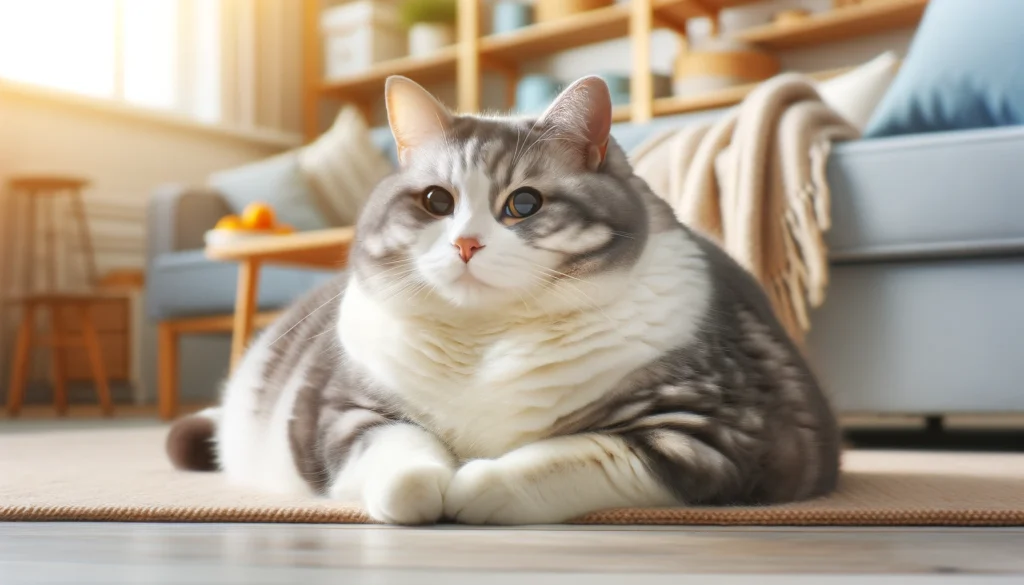
The Importance of Monitoring and Moderation
Regularly monitoring your cat’s weight and body condition is key to identifying and addressing obesity early. A balanced diet tailored to their life stage, along with controlled portion sizes, can help maintain an ideal weight.
Consultation with a Veterinarian
If there’s any concern about a cat’s weight or diet, consulting with a veterinarian is essential. They can provide personalized advice based on the cat’s specific health needs, lifestyle, and any underlying conditions that may contribute to weight gain.
Feline Farewell: Anticipating the Next Chapters
Watching these enigmatic creatures unfold from playful kittens into majestic adult cats is a privilege that brings endless delight and companionship. Yet, it’s the blend of nature’s design and our nurturing care that ensures our feline friends thrive in our ever-connected world.
Here’s to the continued growth and unfolding stories of our beloved feline friends, as we look forward with anticipation to each new chapter in their lives.
Meet Sean, a fintech whiz with a penchant for pet purrs and blockchain buzz. After a decade of fintech feats, Sean’s tech talents leaped from ledger lines to litter lines, driven by a passion for pets and a vision for a more connected pet care community. With three critter companions as co-pilots, Sean launched this blog to share a treasury of pet-friendly tech tips and tales.

